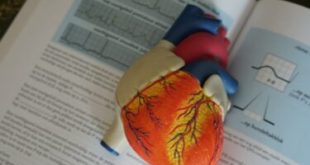Authored by Dr. Achal Saradava, FIAS (Fellowship in Joint Replacement Surgery and Arthroscopy) MS (Ortho) MBBS, HCG Hospitals, Rajkot
A healthy orthopedic lifestyle isn’t just about maintaining strong bones and joints after an injury, it is a proactive approach to promoting musculoskeletal health throughout our life. Orthopedic issues, involving problems with bones, joints, and muscles, can significantly disrupt our daily lives. Daily activities such as walking, climbing stairs, or even getting dressed can become challenging, leading to decreased activity levels, reduced social interaction, and potential weight gain.
Orthopedic surgery, encompassing procedures on bones, joints, muscles, and ligaments, offers life-changing improvements for many patients. However, a concern following surgery is the risk of developing blood clots, also known as deep vein thrombosis (DVT) or pulmonary embolism (PE).
Blood Clots and Understanding Risk Factors:
Blood clots are gel-like substances that form in the bloodstream to stop bleeding after an injury. However, reduced mobility and blood flow stagnation in the legs post-surgery can lead to abnormal clot formation. In severe cases, this can result in deep vein thrombosis (DVT), where a clot develops in a deep vein, typically in the legs. If a piece of this clot breaks off and travels to the lungs, it can cause a pulmonary embolism (PE), potentially blocking blood flow and posing a serious health risk.
Several factors lead to the potential risk of blood clots after an orthopedic surgery:
- Type of Surgery: Major orthopedic surgeries involving extensive tissue manipulation and significant blood loss carry a greater risk of blood clots compared to minimally invasive procedures.
- Limited mobility: Limitations in movement after surgery can significantly reduce blood flow, increasing the risk of clot formation in the legs.
- Medical history: Pre-existing conditions like obesity, varicose veins, and thrombophilia (genetic blood clotting disorders) significantly elevate the risk of blood clots.
- Age: The risk of blood clots increases with age due to natural changes in blood vessel function.
Risk Minimization:
While the risk factors can cause irreparable damage, various strategies can significantly reduce the risk of developing blood clots post-surgery. The below approaches are key to ensuring a minimized risk post-surgery:
- Early mobilization: It is crucial to begin movement exercises as soon as possible after surgery as it helps to get the blood flowing and prevent stagnation. Physiotherapists play a crucial role in guiding patients through safe and effective exercises in this stage.
- Blood thinners (antithrombotic therapy): Medical practitioners prescribe medications like heparin or warfarin that can reduce the blood’s clotting tendency and reduce risk.
- Graduated compression stockings: These specialized stockings apply gentle pressure on the legs, promoting blood flow and preventing clot formation in the body.
- Pneumatic compression devices (PCDs): This approach of inflatable sleeves worn on the legs helps to stimulate muscle contractions and improve blood circulation.
Recognizing the Symptoms of Blood Clotting:
It is vital to diagnose and treat blood clots as early as possible to avoid any major risks.
- Sudden, unexplained swelling, pain, or tenderness in one leg are common and it is usually observed in the calf
- Discoloration or redness of the skin on the affected leg should also be watched carefully
- Feeling warm while touching the affected leg
- Shortness of breath or chest pain
The way forward:
A blood clot following orthopedic surgery is a potential complication; however, a combination of preventive measures and early intervention can greatly reduce the risk. Communicating openly with the doctor about the risk factors and following a personalized prevention plan is crucial for a safe and healthy recovery. By understanding the risks and taking proactive measures, you can significantly reduce the chance of experiencing a blood clot and maximize your chances of a successful surgery.
 Newspatrolling.com News cum Content Syndication Portal Online
Newspatrolling.com News cum Content Syndication Portal Online







